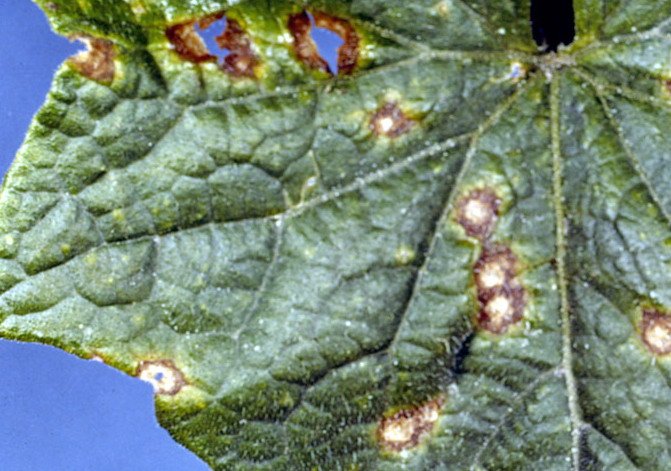Credits: Biovision-Infonet

(c) Clemson University – USDA Cooperative Extension Slide Series,
The fungus can attack all the above-ground plant parts. Cotyledons (seed leaves) of affected seedlings droop and wilt. Lesions (elongated spots) may form on stems of affected seedlings near the ground. Spots on leaves start as small yellowish areas that enlarge and turn brown. The affected tissue dries, breaks and the whole leaf dies. On vines, the spots are elongated and may kill the vines.
Symptoms are most noticeable on fruits. Spots on fruits are circular, black, and sunken. When wet, the centres of the spots become salmon coloured due to a mass of fungal spores. Affected fruits can be destroyed by secondary soft-rot organisms, which enter through broken rind. The fungus is seed-borne. It can survive in crop debris and in weeds belonging to the cucurbit family. Fungal development is promoted by wet conditions, high relative humidity and moderate temperatures (20 to 23.90C). Its host range includes watermelon, cucumber, gherkin, gourd and muskmelon. Cucurbit weeds can also be attacked.
What to do:
- Use resistant varieties, if available.
- Use certified disease-free seeds
- Practise crop rotation with brassicas, cereals and legumes.
- Destroy volunteer cucurbits and weeds